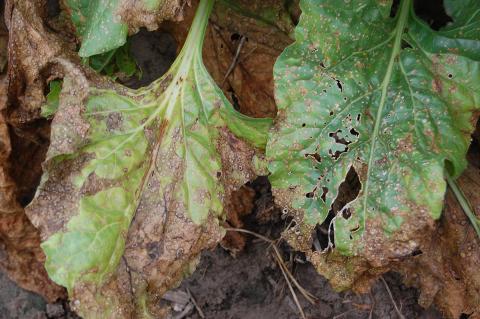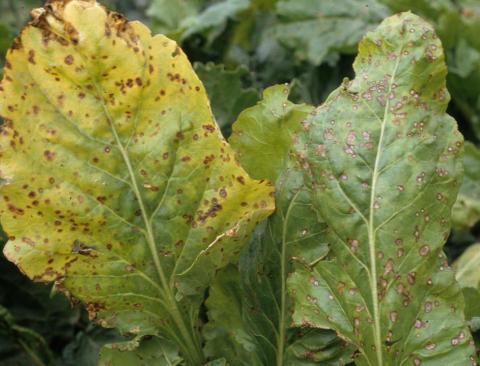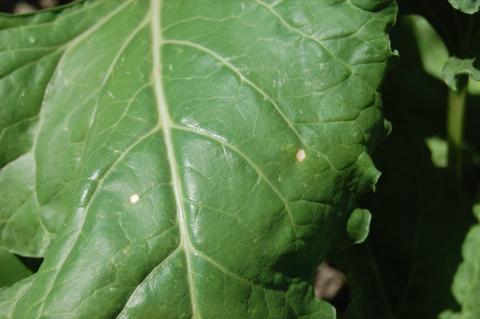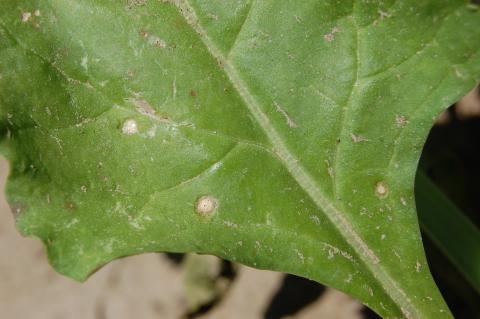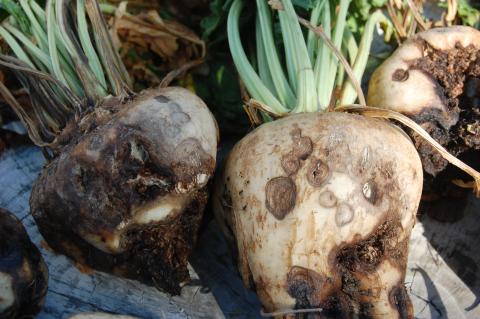A Plant Disease Changes Sugarbeet Production in Nebraska
March 29, 2023
A review of the impacts cercospora leaf spot has had on sugarbeet production in Nebraska since the early 1900s.
Cercospora Leaf Spot Detected in Sugarbeets
July 29, 2022
Periods of high humidity or extended leaf wetness and warm temperatures create the optimal conditions for cercospora leaf spot to develop.

Soil Disease Index, Tool for Managing Sugarbeet Diseases, Available for Growers
December 13, 2021
Since 2003, the UNL Panhandle Research and Extension Center has offered a pre-plant soil test to producers who need to identify soilborne sugarbeet pathogens in fields that will be planted to sugarbeets.
Sugarbeets: Source of the First Gram-Positive Bacterial Disease in Nebraska
March 10, 2021
Nebraska Extension Plant Pathologist Bob Harveson discusses the origins and impact of Gram-positive bacterial pathogens to Nebraska agriculture.
Cercospora Leaf Spot Detected in the Panhandle
July 22, 2020
On July 13, symptoms characteristic of Cercospora leaf spot (CLS) were found on lower leaves of sugarbeets from research plots at the Panhandle Research and Extension Center at Scottsbluff.
Cercospora Leaf Spot Spotted in the Panhandle – Be Aware!
July 15, 2019
On July 15 symptoms characteristic of cercospora leaf spot were observed on the lower leaves of sugar beets at the university’s Panhandle Research and Extension Center in Scottsbluff. While it is unusually early for this disease, growers are urged to scout their fields as fungicide applications may be necessary.
Dry Rot Canker – Obscure, but Returning Rhizoctonia Disease
May 23, 2018
Dry rot canker, one of several rhizoctonia diseaes of sugarbeet, has been relatively obscure since first being identified almost a century ago. New technologies, however, have helped to differentiate it from the more common Rhizoctonia root and crown rot disease.
Fungicides are for Fungi
January 8, 2018
Symptoms of bacterial diseases can be easily confused with those of fungal diseases in field crops. This article, from the Proceedings of the 2018 Nebraska Extension Crop Production Clinics, reviews some of the common mistakes made in the major field crops and reviews research on the impact of fungicide use after hail events in corn and soybean.
